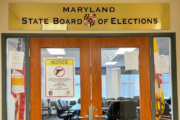STEVE ROTHWELL
AP Markets Writer
NEW YORK (AP) — It’s no surprise that the prospect of a Federal Reserve rate hike worries stock investors.
The Fed’s unprecedented economic stimulus has in large part driven a surge in stock prices since 2009. The central bank has bought trillions of dollars of bonds and kept short-term interest rates close to zero. That’s allowed businesses and consumers to refinance their debt at lower rates, freeing up cash to spend.
But if history is a guide, investors have nothing to fear.
In the nine instances since 1955 that the Fed has started raising rates after a recession, the Standard & Poor’s 500 index has risen by an average of 58 percent between the first hike and the peak of the market, according to LPL Financial, an independent broker-dealer based in Boston.
The Fed is set to end its bond purchases in October and most economists expect the first short-term rate hike by mid-2015.
These early increases, analysts say, are unlikely to derail the current bull market for stocks, because the Fed would be raising rates in response to a growing economy. Manufacturing expanded in August at the strongest pace in more than three years. Hiring is also picking up, along with consumer confidence.
“Rising interest rates are usually a symptom of the success of the economy, and companies are benefiting from it,” says Seth Masters, chief investment officer for Bernstein Global Wealth Management. “Generally, that’s pretty good if you’re a stock investor.”
RISING RATES, RISING STOCKS
Research from Burt White and Jason Nicastro at LPL shows that after an initial bout of volatility, stocks typically rise along with rates.
The last time the Fed raised rates was 2004. The market flinched at first, with the S&P 500 dropping 3.4 percent in July after rates rose from 1 percent to 1.25 percent. The index then climbed for another three years, gaining 37 percent between the first rate increase and the market’s peak in October 2007.
Stocks rise when the Fed lifts rates enough to contain inflation, but not by so much that the hikes suffocate borrowing and lending. If the economy continues to expand, the benefits of stronger growth outweigh any headwind from higher borrowing costs.
A healthier economy also means stronger corporate earnings, which drive stock prices, says Jim McDonald, chief investment strategist at Northern Trust Asset Management.
Upcoming hikes are expected to be small and gradual, so they don’t choke off growth, says Brad Sorensen, a director of market and sector research at Charles Schwab.
The median short-term rate supported by Fed policymakers at the end of next year is 1.38 percent, up from a range of zero to 0.25 percent currently.
RISKS
Of course, the Fed won’t always read the economy right, and that’s what makes stock investors nervous.
Four of the five previous bull markets since 1970 ended as investors got spooked by a recession, or the anticipation of one, and sold stocks. And what causes recessions? In three of the past five, it was the Fed hiking interest rates to slow inflation.
Typically, though, the problems for the economy and stock market don’t come until after the Fed has hiked rates a number of times, not early in the process. Eventually, higher rates put a brake on the economy and crimp earnings, prompting investors to sell stocks.
The last cycle of rate hikes topped out at 5.25 percent, with the final increase coming in June 2006. Stocks peaked in October of the following year.
Still, some investors worry that the next hikes will defy historical patterns because of the Fed’s unprecedented stimulus.
Once the central bank ends its third round of quantitative easing after its next meeting that starts Oct. 28, its balance sheet will stand at close to $4.5 trillion, about five times its size from before the financial crisis.
“A pessimist could say ‘well, it’s going to be different this time because the market’s going to be inflated by all the stimulus from the Fed,'” Northern Trust’s McDonald says.
Like Sorenson, though, he thinks the most likely scenario is that the Fed will raise rates gradually, the economy will continue expanding, and stocks will keep rising.
Some parts of the market are more vulnerable to rising rates:
— Dividend-rich shares of utilities, phone and consumer staples companies could get hurt, says James Liu, Global Market Strategist for J.P. Morgan Funds. Investors typically buy these safe-and-steady stocks when they are worried about a slowing economy. This year, they have been buying them for income because interest rates are low. Utilities have gained 9.3 percent, compared with 6.8 percent for the S&P 500.
— High-yield bonds, one of the riskiest parts of the debt market, are another worry for Liu. This debt is issued by companies that are more likely to default. If rates rise, the probability of companies defaulting also increases.
Investors will listen for more clues to the Fed’s rate strategy at its next policy meeting in late October. Until more is known, investors may be in for a bumpy ride.
“We’re going to be right back where we started in six weeks,” says Liu, “So, it’s not over yet.”
___
Associated Press Business Writer Bernard Condon also reported from New York
Copyright 2014 The Associated Press. All rights reserved. This material may not be published, broadcast, rewritten or redistributed.







